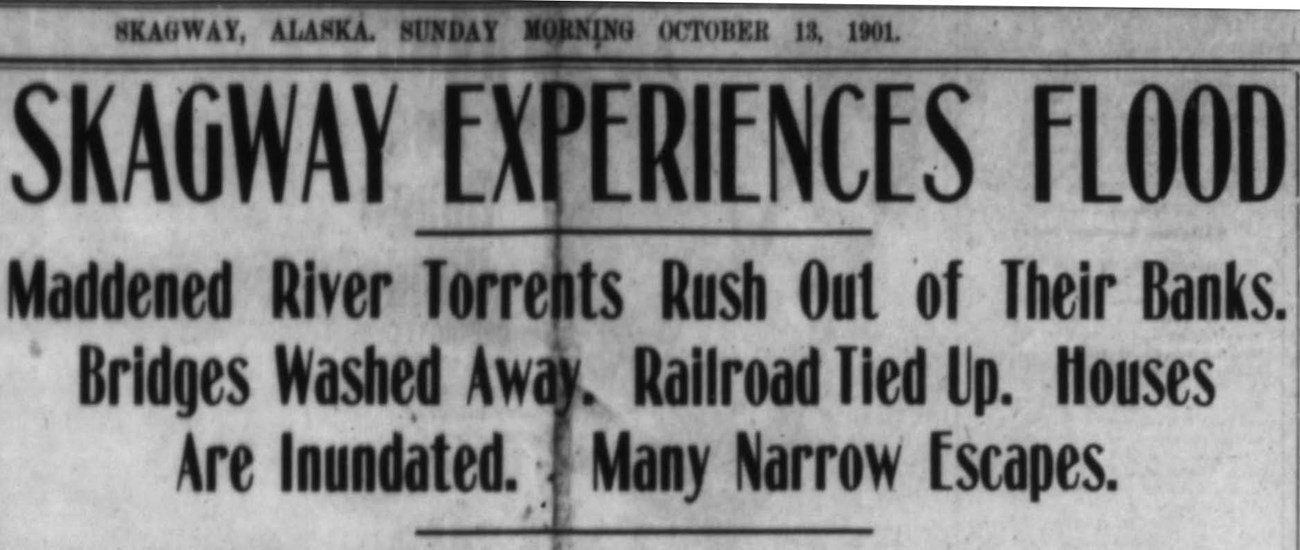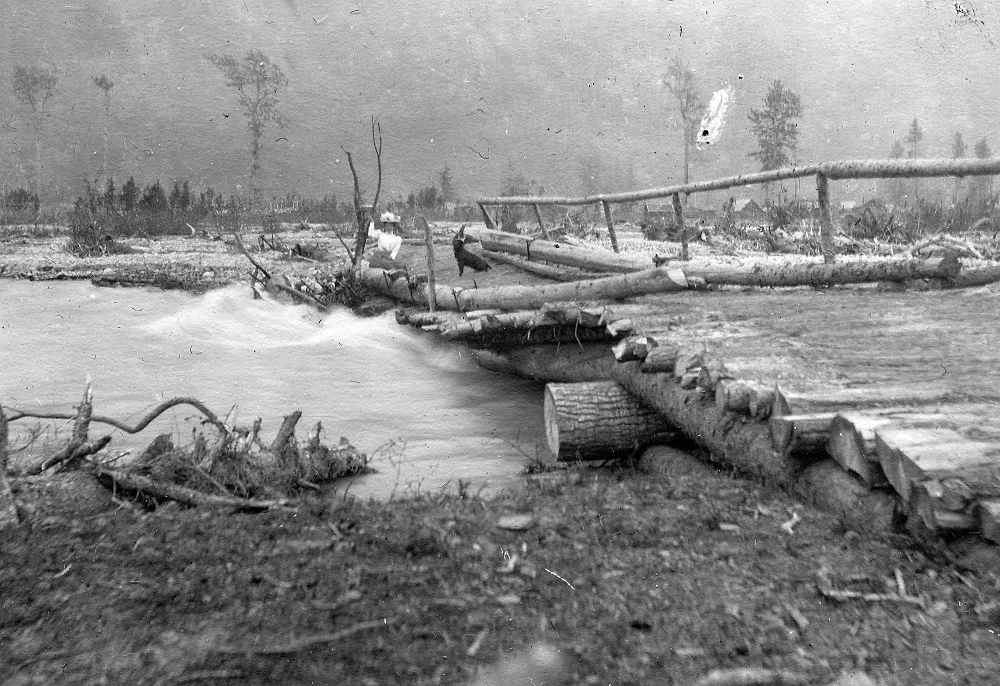|
In October of 1901 Skagway experienced its first natural disaster since its founding. Torrential rain hit the city causing the Skagway River to rise far above its banks. Snow in the mountains began to melt adding to the volume of water flooding into the Skagway valley. The results wrecked havoc on the still-young town.

Daily Alaskan, October 13, 1901 An Unprecedented Natural DisasterOn October 12, 1901 after three days of rain, the Skagway river began to rise dramatically. By 8am, all business in Skagway had come to a standstill. At 9am the fire bell rang out to signal the danger to everyone. The Daily Alaskan reported that the river "ran down gullets, through culerts, seeking a level. Holes were filled up, then currents developed and along State street water soon became in evidence, as far down as Fifth avenue." At the same time today's Pullen Creek "poured down Broadway... and between Seventh and Third avenues, miniature lakes were formed. Water poured under doors and made things all sloppy on the inside." As Sixteenth street was identified as a weak place along the river, dozens of people hurried to enforce the bank there. Skagway was in a panic.Military AssistanceAs the water continued to rise, it crept into residential and business areas. Fearing civilian safety, the United States Army stepped in to help. Company L, 24th Infantry United States Army was already stationed in Skagway. Capt Isaac Jenks led a group of men to assist with disaster control. Capt. Jenks took 30 enlisted men and two wagons and headed to the river's edge. Company L arrived just in time to help evacuate a private house. The army men worked frantically to reestablish a riverbank. As more evacuations were needed the military kept citizens calm while saving not only property, but also lives.The DamageBecause of Company L the only losses the city sustained were those of structures, not lives. Flood damages were initially estimated at about $75,000, or over $2,100,000 today. The rising water brought lots of debris down the valley with it. This combination damaged three bridges and flooded a section of road. The Daily Alaskan reported "[t]he swift water took everything moveable before it. Wood, boxes, out-houses, were picked up in the mighty grasp of the flood."The next day the Daily Alaskan estimated that half of the city received flood damage. "Many of the houses presented sorry looking sights. Carpets were soaked. Mud filled every crevice, and a sticky, shiny substance covered everything. Furniture was damaged, and articles not off the floor or hanging low down, were ruined." The White Pass & Yukon Route railroad sustained damage all along its route to Whitehorse. Two railroad bridges in town washed away. Water saturated the sides of local mountains causing landslides. These destroyed a new section of snow sheds, and stopped all railroad traffic for three days. An Important RoleWhen the waters receded, Skagway picked up the pieces of the damage Mother Nature had caused. As a young city, Skagway had never dealt with this level of destruction before. The city had no plan for natural disasters, no safety net. It was a time before the Federal Emergency Management Agency (FEMA), when Alaska was a military district, not a territory or state. When the city was not prepared for disaster, Company L was. Their actions, as the first responders, made the difference between life and death.
National Park Service, Klondike Gold Rush National Historical Park, Candy Waugaman Collection, KLGO Library SV-137-9032 |
Last updated: July 6, 2017
